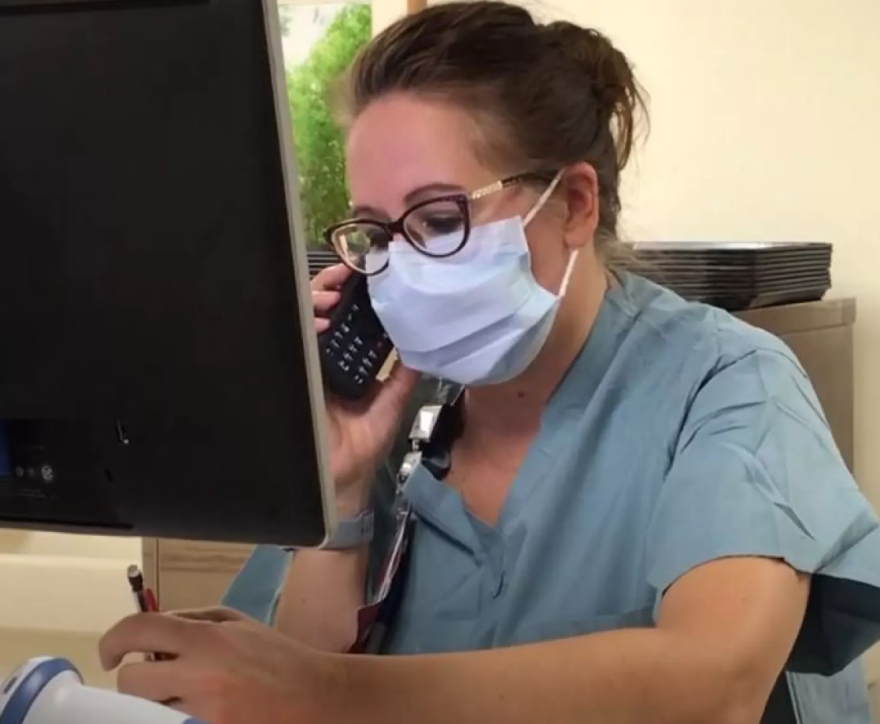Life expectancy is down significantly in the United States and even more so in Missouri. For someone born in 2021, life expectancy is 74.6 years in the state compared to 76.1 for the nation as a whole.
There are several reasons for the drop: Opioid overdose deaths, cancer and heart disease are among those. And the COVID-19 pandemic helped bring those numbers down as well.
The virus killed 1,130,593 people in the U.S., according to the Centers for Disease Control and Prevention. And it took the lives of 22,870 people in Missouri, according to Johns Hopkins University.
“In 2020 and 2021, COVID was the third leading cause of death in Missouri for both of those years after heart disease and cancer, which have also been historically at the top of the list for many years," said Dr. Nancy Yoon, chief medical officer for the Springfield-Greene County Health Department. "And so, the total number of Missouri deaths increased from 2019 to 2020 by almost 19%. And that was the highest increase in about a century for mortality.”
The pandemic highlighted the overall health of Missourians. Those with chronic conditions such as heart disease and diabetes and those who were obese were at the greatest risk of serious complications from COVID-19 and death.
“Overweight and obesity was one of the highest risk factors for somebody to have a bad outcome from COVID. By bad outcome, I mean death outcome. And diabetes, heart disease, chronic lung conditions, chronic kidney conditions, chronic liver conditions – those are the predisposing factors when you compare people without those conditions to people who have at least one of those, and many have two or three of those at the same time, your risk of dying is several times higher," said Dr. George Turabelidze, Missouri state epidemiologist at the Missouri Department of Health and Senior Services.
Missouri does not have a culture of health that some other states have, according to Turabelidze. When looking at the number of people with chronic conditions, he said Missouri is not the worst among states – it’s somewhere in the middle, but we need to do better.
Kendra Findley is administrator of community health and epidemiology for the Springfield-Greene County Health Department.
The life expectancy is the lowest it’s been since 1996, and so, to me it’s just a reminder that we have to take better care of ourselves," Findley said.
COVID-19 also highlighted racial disparities – especially in the beginning of the pandemic.
A report by the Kaiser Family Foundation found that overall, certain segments of the population have seen the heaviest health impacts from the pandemic. Those are Black, Hispanic and American Indian and Alaska Native people. And a study by the Centers for Disease Control and Prevention found racial disparities in the distribution of oral antiviral treatments for COVID-19.
Yoon said social determinants of health – economic stability, education access and quality, healthcare access and quality, neighborhood and built environment and social and community context -- have a big impact on a person’s ability to be healthy.
“So, you know, things like their economic situation, access to healthcare, food security, all of these things will affect...different people in different ways, And COVID just really exposed some of these disparities that people are exposed to at no fault of their own, but more of, you know kind of systemic factors and things like that that are out of their control,” she said.
Andy Hunter, bureau chief for healthcare analysis and data dissemination at the Missouri Department of Health and Senior Services, said, while COVID-19 contributed to the drop in life expectancy due to the number of lives lost, there’s more to it than that.
"We saw an increase of 11,000 more deaths in 2020 compared to 2019, and only like 7500 of those were listed as COVID deaths," said Hunter. "So, almost every other category except cancer had an increase between 2019 and 2020, so I do think it's a lot of residual situations where they weren't getting the care or treatment that they normally would have."
Yoon said people were not able to go to their primary care visits and screenings during the early part of the pandemic. But even when they opened, people were afraid to go out.
“Patients themselves had fear that they didn’t want to go in to have those procedures even if they did have access to them," said Yoon. "So when they, you know, delayed or didn’t get some of their regular screenings, this led to things like, you know, cancers being diagnosed later, conditions getting out of control like their diabetes and blood pressure. So, all of those, even though those did not directly lead to at least immediate mortality, it definitely made some of their chronic conditions worse. And in the future, down the line, it may also contribute to a shortened life expectancy.”
And she said COVID forced people to isolate at home, which led to risk of substance abuse, depression and suicide.
If you or someone you know is having suicidal thoughts, call the Suicide and Crisis Lifeline — 988.



